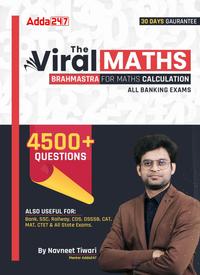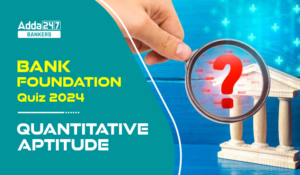Q1. If the cost price is same and the selling price is reduced by 40%, the profit gets reduced by 50%. If the selling price is increased by 20% then what will be the profit percentage?
(a) 400%
(b) 250%
(c) 500%
(d) 600%
(e) 750%
Q2. A bag has 15 balls – each of them is either red, blue or green. In every trial, one ball is drawn and put back in the bag before the next trial. The probability of not getting a blue ball in two consecutive trials is 9/25. The probability of getting two green balls in two consecutive trials is 1/25. What is the probability of getting balls of three different colors in three consecutive trials?
(a) 18/125
(b) 24/125
(c) 4/125
(d) 30/125
(e) 12/125
Q3. A basket contains only four kinds of fruits – guavas, mangoes, oranges and pears. What is the minimum number of fruits that should be picked from the basket to ensure that at least 5 guavas or at least 6 mangoes or at least 7 oranges or at least 8 pears are picked?
(a) 25
(b) 26
(c) 24
(d) 22
(e) 23

Q5. Rajat purchased few pencils, few erasers and few sharpeners from a shop where price of a pencil and an eraser is Rs 5 and Rs 15 respectively. Number of sharpeners purchased by Rajat is 7 more than the number of erasers. Which of the following is always true?
(a) If Rajat spends a total of Rs. 300, he can purchase a maximum of 16 erasers.
(b) The last digit of the number of sharpeners purchased by Rajat is either 7 or 2.
(c) If Rajat spends a total of Rs 120 and price of a sharpener is Rs 10 then the maximum number of pencils can be 6.
(d) Both (a) and (b)
(e) None of the above.
Solutions




. . .





 Quantitative Aptitude Quiz For Bank Main...
Quantitative Aptitude Quiz For Bank Main...
 Quantitative Aptitude Quiz For Bank Foun...
Quantitative Aptitude Quiz For Bank Foun...





